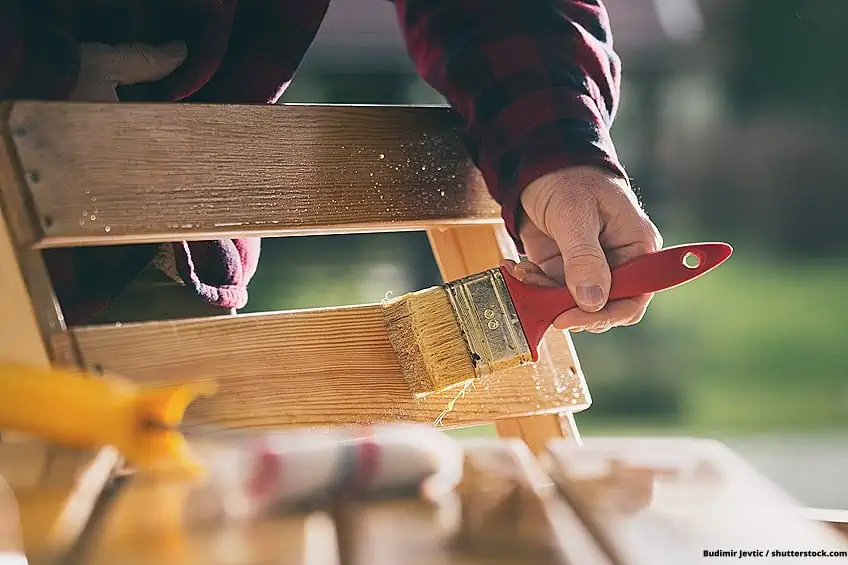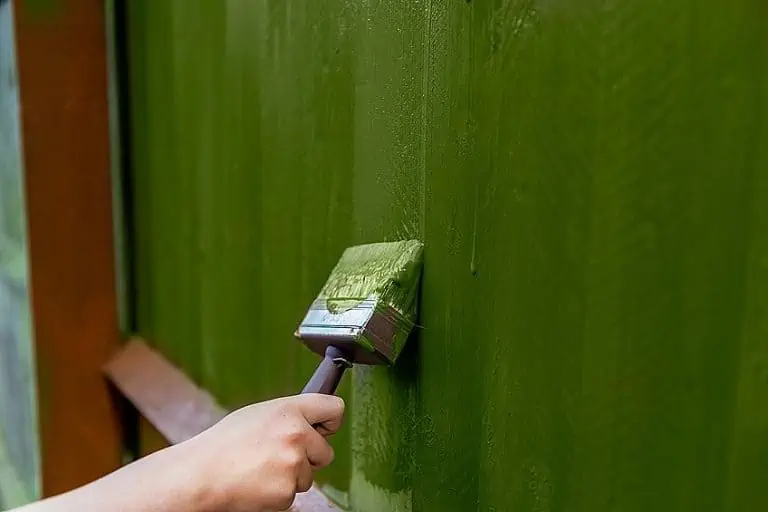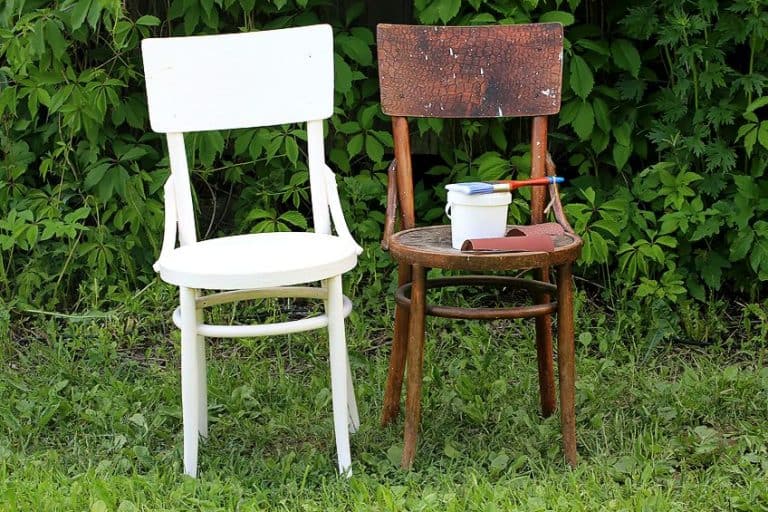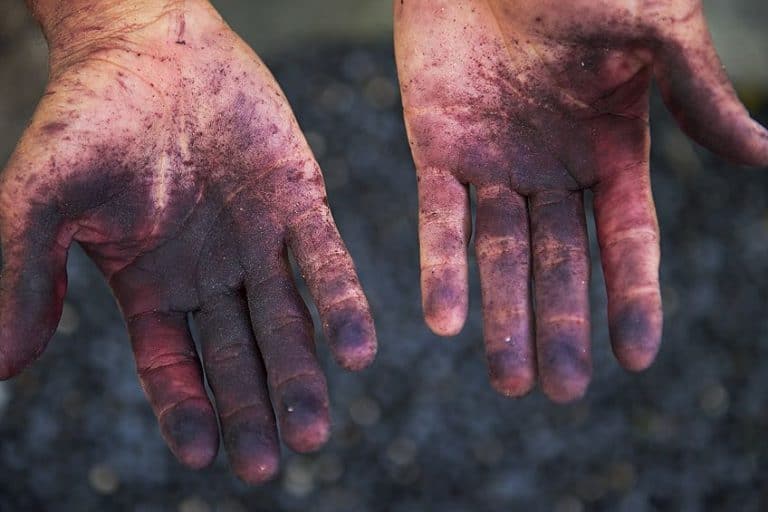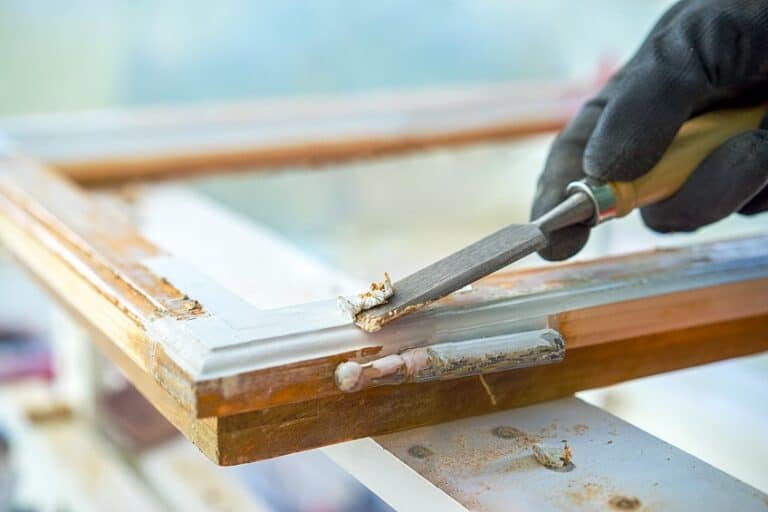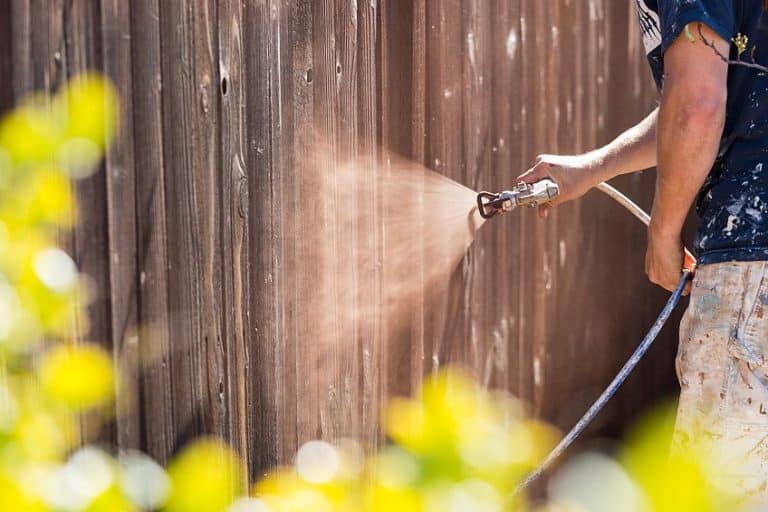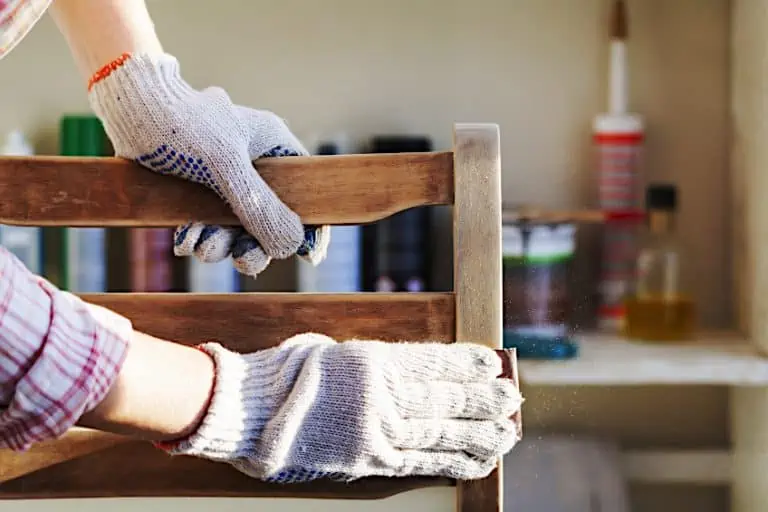Best Wood Primer – Selecting the Best Primer for Bare Wood
Wood primer is a form of sealant that is applied to wood so as to seal, smoothen, and provide adhesion for paint to be applied to its surface. Without it, your wood project would look shabby rather than chic, so this is a must if you wish to apply paint to wood.
Table of Contents
- 1 What is Wood Primer?
- 2 Primer vs Paint: What is the Difference?
- 3 What is the Best Wood Primer?
- 4 What Type of Primer Should I Apply?
- 5 Is it Better to Use Paint or Paint with Primer?
- 6 Frequently Asked Questions about Wood Primer
- 6.1 Do I Have to Apply Primer Before Painting?
- 6.2 How Long Does Wood Primer Take to Dry?
- 6.3 Can Any Paint Go With Any Primer?
- 6.4 Can I Use White Paint as a Primer?
- 6.5 What Type of Brush Should I Use?
- 6.6 How Do I Apply Wood Primer?
- 6.7 How Many Coats of Wood Deck Primer Do I Need?
- 6.8 Can Primer Be Used as the Finished Coat of Paint?
- 6.9 Do I Need to Apply Primer to Varnished Wood before Painting?
- 6.10 Can I Use a Watered-Down Paint as a Primer?
- 6.11 Is Primer the Same as an Undercoat?
- 6.12 Where Can I Buy Wood Primer?
What is Wood Primer?
Wood Primer is a base layer that is applied to wood under the layer of paint that you wish to apply. It is important to apply a base layer of wood primer to the wood surface for its protection. This base layer allows for the paint to better adhere to the surface of the wood, thus ensuring that the paint work lasts longer on the surface of the wood.
An oil-based wood primer can be used indoors or outdoors, and provides a protective sealant layer that will stop the natural acidic tannins from seeping into the wood. Woods such as redwood or cedar have particulalry high tannin levels. There are many different types of primers, each with their own unique characteristics to suit the purpose for which it is needed.
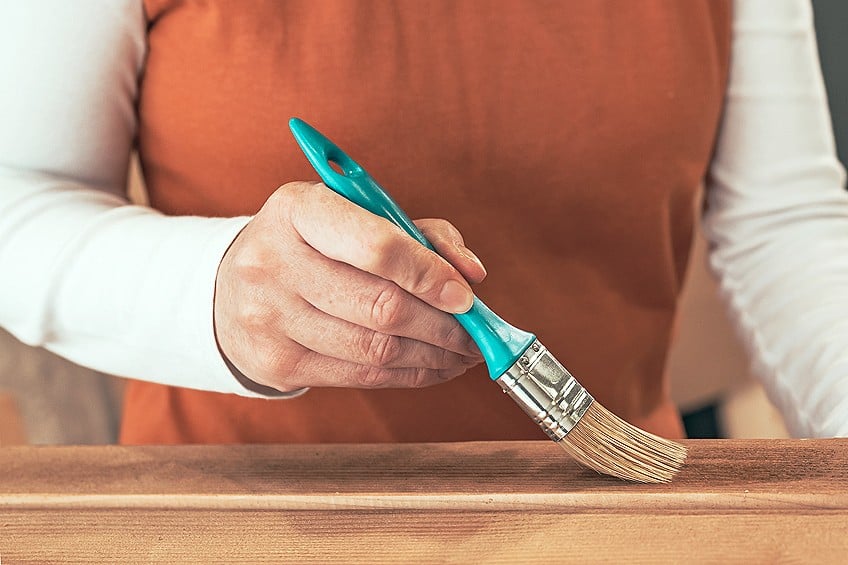
Adhesion Sealer
This type of primer bonds well to the surface beneath it, and preps the wood nicely for the next layer of paint to be applied on top of it.
Porosity-Sealing Primer
Wood-based surfaces have a microscopic porosity, which means that there are microscopic spaces between the fibers that need to be filled and smoothened out. A porous primer will do just that! It will seal and smoothen out the surface so that a topcoat can be applied.
Moisture-Diffusion Barrier Primers
Clear Penetrating Epoxy Sealer (CPES) is a very efficient sealer of wood surfaces, as it forms a sealant against water whilst still allowing for the evaporation of the water. Not only will this prevent the wood from rotting, but it will stop the collection of water on wood surfaces. This is because it prevents the passage of liquid water, but still allows for the passage of water vapor.
Sanding Primers
These primers glue the pieces of wood together so that the surface of the wood is smooth and even, making it ideal for a new layer of paint. On older wood such as that on windowsills, you can apply a layer of epoxy filler over the initial layer of CPES. The wood treated with the epoxy sealer can be sanded off the next day. One last layer of CPES can be applied on the last day as a final layer of sealant, thus providing a good foundation for the layer of paint to be applied onto it.
Combination Primers
CPES is a multi-purpose primer: It provides a sealant layer to the wood, prevents any staining and bleeding, and provides a strong foundation for paint to adhere to the surface of the wood.
Primer vs Paint: What is the Difference?
The difference between paint and primer is that paint consists of resin pigments (which provide color), whereas primers contain resins that seal up porous wooden surfaces so as to provide a good foundation for a top layer of paint to be applied onto it. There are many advantages to using a wood primer:
- It provides an even finish to your finished paint job. Without it, you may be able to see the patterns of strands from the wood on the surface after you have finished painting.
- Most wood primers dry really quickly.
- It will actually make the paint that is applied to the surface of the wood last much longer than if it was not applied otherwise.
- Wood primers neutralize the color of the wood, thus bringing out the shade of paint that you are applying even more.
- Wood primer enhances the quality of the paint that is being applied as it prevents cracks and peeling from occurring.
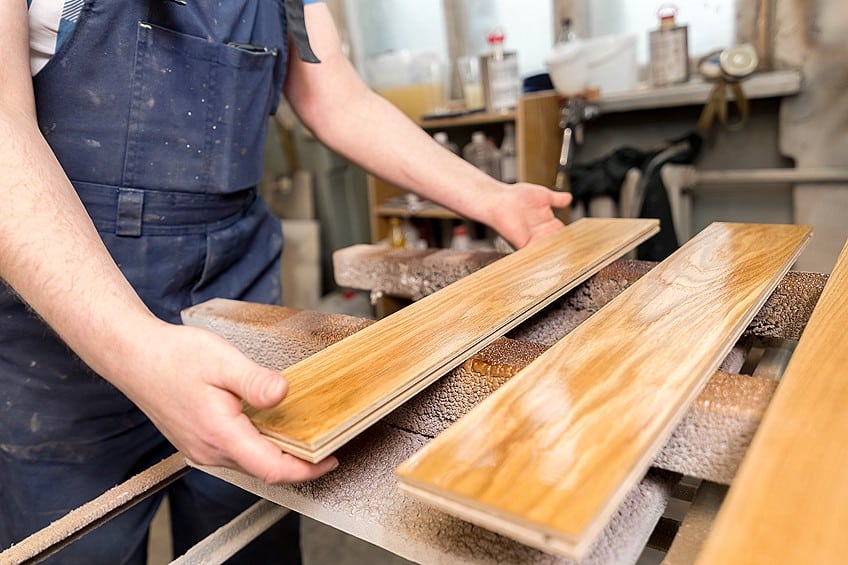
What is the Best Wood Primer?
There are many great wood primers available on the market, which can make the selection process all the more difficult. To help you select the best wood primer for your particular project, we have isolated our top picks and provided the pros and cons of each product.
Premium Choice: KILZ Adhesion High-Bonding Interior Latex Primer/Sealer
This brand of primer has received excellent reviews from its many satisfied customers. This is a latex-based primer that can adhere to most kinds of surfaces, particularly those that are known for being difficult to paint. This primer bonds extremely well to wooden surfaces, and is the best option for old wood, as it prevents the wood from bleeding into the fresh paint whilst providing a superior finish to your work.
- A latex primer that bonds securely to tough-to-paint surfaces
- Use on most interior and exterior surfaces
- Quick to dry
You can apply this primer to both interior and exterior surfaces and will work with most topcoats. It has a smooth and watery consistency which gives it a more blended appearance when applied under a coating of paint. When applying this primer to your wooden surface, ensure that the surface has been sufficiently prepared and cleaned beforehand. You can apply this product with a brush, spray, or roller. The primer should become dry to the touch within just 30 minutes, and you will be able to recoat the surface within one hour.
Pros
- Works well with difficult-to-paint surfaces
- Can be applied to interior and exterior surfaces
- Quick-drying
- Cost-effective
- Blended appearance
Cons
- Not that suitable for application with a sprayer
Budget-Friendly: RUST-OLEUM Zinsser Bull’s Eye 1-2-3 Primer
This is one of the best wood primers on the market and has one of the best exterior primer paint reviews. This product acts as both a primer and a sealer, and can be applied on a variety of surfaces with its water-based consistency. This primer offers terrific adhesion to surfaces and will work with any oil- or latex-based topcoat paints.
- Suitable for interior and exterior application
- Contains a rust inhibitor
- Resists mildew growth, blistering, and peeling
A unique benefit of this wood primer is that it makes it less likely for mildew and fungus to grow on the wood. In fact, this primer is also resistant to rust and it will prevent the wood’s tannins from bleeding into the new coat of paint. You can apply this primer to most surfaces without needing to sand it first. This product is also available as an aerosol spray paint to help you reach more difficult areas.
Pros
- Can be used both externally and internally
- Adhesive to most surfaces.
- Can be cleaned easily with a soap and water solution
- Prevents the growth of mold and mildew
- Stops blisters from forming on the wood
- High coverage of up to 100 square ft.
- Can be applied to high-pH surfaces such as concrete
Cons
- Requires several coats
Our Top Pick: KILZ Premium High-Hide Stain Blocking Latex Primer/Sealer
This primer is best suited to bare wood and will fill up any crevices in the wood so as to obtain a smoother finish. It adheres well to wood surfaces, providing a good base layer if you want to paint over it. You can apply this primer over or under latex- or oil-based paints, althought the surrface must be prepared properly first.
- Powerful stain-blocking water-base formula
- Mildewcide protection to prevent mildew and mold
- Zero VOCs, low odor and easy clean-up
This product prides itself on its ability to block and hide light to medium stains, old colors, and other surface imperfections. You can apply this primer to surfaces found indoors and outdoors, especially humid areas such as the bathroom or laundry room.
This primer releases no volatile organic compounds (VOCs) and emits little to no odor, making it safe for use in most homes and other occupied places. You will be able to clean this product up easily by using a soap-and-water solution.
Pros
- Smoothes over uneven surfaces
- Excellent adhesive properties
- Can be used for both interior and exterior wood surfaces
- Provides the perfect base for paint recoloring
- Large coverage
- Protects against mold and mildew damage
- No VOCs
Cons
- Cannot be used on heavier, darker stains
What Type of Primer Should I Apply?
There are a variety of different types of primer, each of which will be better suited to a different type of wood. The type of primer you select will depend on the type of wood onto which you will be applying it, the quality fo the wood, as well as the surrounding environment of the piece. For example, you will require a specific type of primer depending on whether it is being applied to an indoor or outdoor surface.
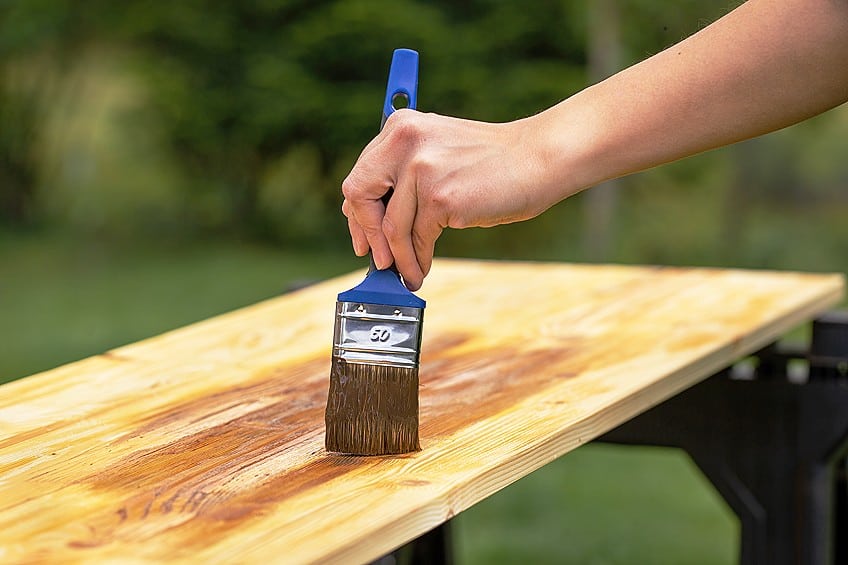
You should keep the following in mind when choosing the right type of primer:
- Oil-based primers are best used to block out external odors caused by smoke, nicotine and water, however they tend to give off a harsh odor themselves.
- Oil-based primers are better to use if you want a strong durable finish, as they hide imperfections on the wood better than water-based primers. Thus, there will be less of a need for sanding down bumps and dips on the surface of the wood.
- Use an oil-based primer over old paintwork that hasn’t chipped or peeled. This will adhere well to the old coat of paint and will provide a smooth foundation for a fresh layer of paint to go over it. It will, however, take a bit longer to dry than water- or shellac-based paints, which may dry faster but are more brittle and can crack more easily.
- For exterior wood that stains easily, such as cedar and redwood, use an oil-based stain blocker to prevent this wood from bleeding into the paint. If you are going to finish with a final topcoat, make sure that it is oil-based. A latex- or acrylic-based top coat can also be applied over an oil-based or water-based primer beneath.
- Water-based primers usually contain little to no VOC’s and emit very little odor. These primers work well to prevent stains from things such grease, ink, and crayon. For the best paint color results, you should tint the primer to a shade that is as close to the top coat paint layer as possible.
For most drywall jobs, a standard primer will do, however it is better to use a thicker primer to cover inconsistencies on the surface of the drywall.
- In areas that are more prone to moisture damage, such as in bathrooms and kitchens, it is best to use a primer that specifically forms a sealant layer that is impermeable to mildew growth. Before applying the sealant layer of primer, be sure to destroy any existing mold and mildew first by using a strong bleach-water solution.
- Wood primer is needed to conceal blemishes on the wood. This will provide an even finish that is prepared for when you are ready to start painting.
- For a complete change in color, use a tinted primer. For the best top color paint results, tint the primer to a shade of grey, as this should cover the older paint color and any inconsistencies on the wall surface underneath it.
- Primer is especially important for outdoor exterior surfaces, as they make your paintwork on exterior wood surfaces last longer. Make sure it is acrylic-based and that the surface onto which you are applying it is clean, dry, and does not have a glossy finish to it. A good tip would be to buy paint and primer from the same manufacturer, as some paints and primers are designed specifically to work well with each other.
Is it Better to Use Paint or Paint with Primer?
In most cases it is better to apply paint and primer separately, as each one has characteristics that are unique to that product. Paint gives color, shine, and provides protection against external elements that would otherwise damage the wood. Primer, on the other hand, provides a sealant layer of protection to the wood. Primer provides a foundation for the paint to strongly adhere to and it inhibits stains from forming on the wood surface.
If the surface you are going to paint on already has an old layer of paint on it, then a paint with primer will do. However, most situations will require primer to be applied first separately, after which you can apply a layer of paint on top of that.
When applying a layer of primer on the surface of glass, tiles, polymerizing vinyl chloride (PVC), or other similarly smooth materials, you will require a primer with bonding properties that will ensure the top layer of paint adheres well to its smooth surface. A primer-and-paint combination would not provide the required adhesion necessary for the paint to stick to its surface.
Stain-blocking primers are made to prevent stains from forming on the surface of the wood, whereas shellac primers are good at masking smells. A paint-and-primer combination would not prevent the stain from seeping to the surface.
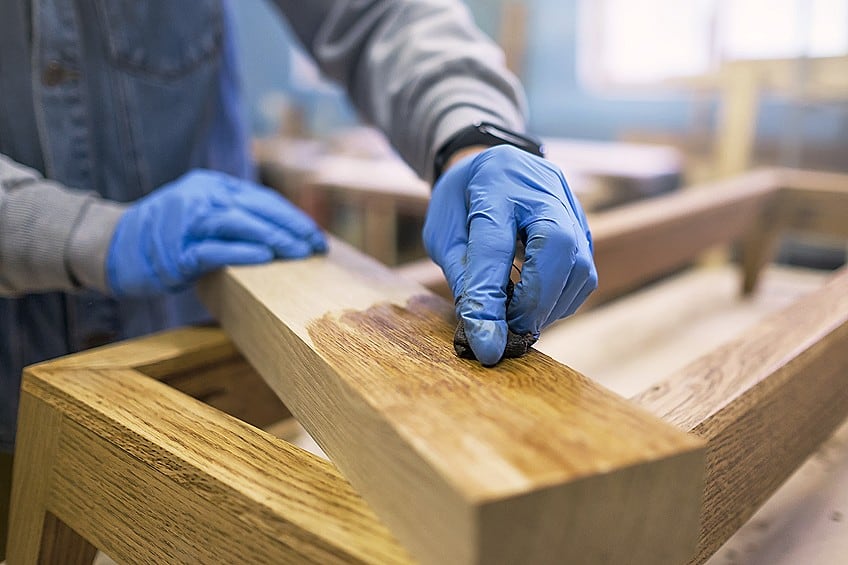
View our Primer For Bare Wood web story here.
Frequently Asked Questions about Wood Primer
Do I Have to Apply Primer Before Painting?
We definitely advise using a primer before applying a layer of paint, as the darker color of the wood tends to show through the paint layer above it.
How Long Does Wood Primer Take to Dry?
Most wood-based primers take up to four hours to dry properly before another coat can be applied. However, a water-based primer is the exception to this rule and will dry slightly faster, making it a good choice for if you are in a hurry.
Can Any Paint Go With Any Primer?
In most cases this is not the case. There is usually a correlation between the types of paint and the types of primer that can go together.
Can I Use White Paint as a Primer?
Even white paint will not perform the job that a good wood primer does, which is to seal and smoothen the wood so that the top layer of paint adheres to it.
What Type of Brush Should I Use?
Any type of brush will do, but synthetic bristle brushes tend to work best.
How Do I Apply Wood Primer?
Make sure the surface of the wood is clean and has no dirt, dust, and other debris. Apply the first coat evenly and let it dry. If you notice any irregularities in the layer you have just applied, you can obtain a smoother look by sanding it down a bit after it has dried.
How Many Coats of Wood Deck Primer Do I Need?
The thicker the primer, the fewer coats you will need. As a general rule, usually only two coats need to be applied to the surface area. Naturally, outdoor projects will require more coats than indoor projects. It also depends on the type of wood surface to which you are applying the wood primer.
Can Primer Be Used as the Finished Coat of Paint?
If you leave primer on as the final layer, it will eventually break down. So, no, primer cannot be left on as the final layer on wood.
Do I Need to Apply Primer to Varnished Wood before Painting?
You could if you wanted to. An oil-based primer is most suitable to apply to wood that is already varnished.
Can I Use a Watered-Down Paint as a Primer?
This is commonly known as a mist coat, and is achieved by watering down the paint so that the top layer of paint adheres better to the surface area of the wood. However, it is better to use a proper primer, as this will save you time and is hassle-free when compared to making a mist coat yourself.
Is Primer the Same as an Undercoat?
An undercoat is also known as a primer, but it is not always the case the other way around as not all undercoats are primers. Thus, it is better not to use the terms interchangeably so as to avoid confusion.
Where Can I Buy Wood Primer?
Wood deck primers can be bought at most home improvement centers or online on sites such as Amazon.

I have been into woodworking since 2005 and woodturning since 2011. Because of my love for wood and woodworking, I started woodhappen.com to teach other enthusiasts about how to finish and seal wood, the best woodworking tools, the different types of wood, and everything else related to woodworking! Read more about me here.

